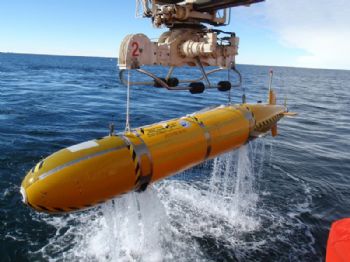
Researchers at the University of Southampton have captured unprecedented data about some of the coldest abyssal ocean waters (between 3,000m and 6,000m deep) on Earth — known as Antarctic Bottom Water — during the first voyage of the yellow robotic submersible known as Boaty McBoatface, which arrived back in the UK at the end of June.
The team captured data on temperature, speed of water flow and underwater turbulence rates of the Orkney Passage, a region of the Southern Ocean that is around 4,000m deep and roughly 500 miles from the Antarctic Peninsula.
The information collected will now be analysed to understand the complex process of ocean mixing and how it affects the climate.
This project saw the first Antarctic voyage of Boaty McBoatface, one of the Autosub Long Range class of unmanned submersibles — the latest type of autonomous underwater vehicle (AUV) developed by the National Oceanography Centre.
The Autosub was named following last year’s campaign by NERC to find a name for the UK’s new polar research ship.
While the ship will be named after naturalist and broadcaster Sir David Attenborough, the people’s choice — Boaty McBoatface — was given to the AUV that will later help the research ship (currently being built) to explore parts of the polar regions inaccessible to humans (
www.southampton.ac.uk).